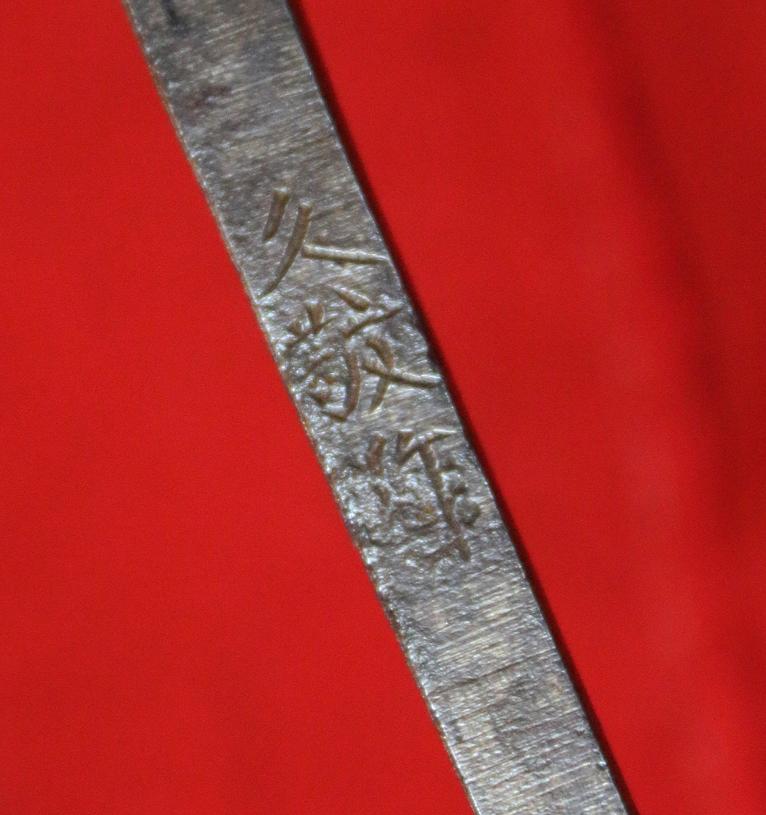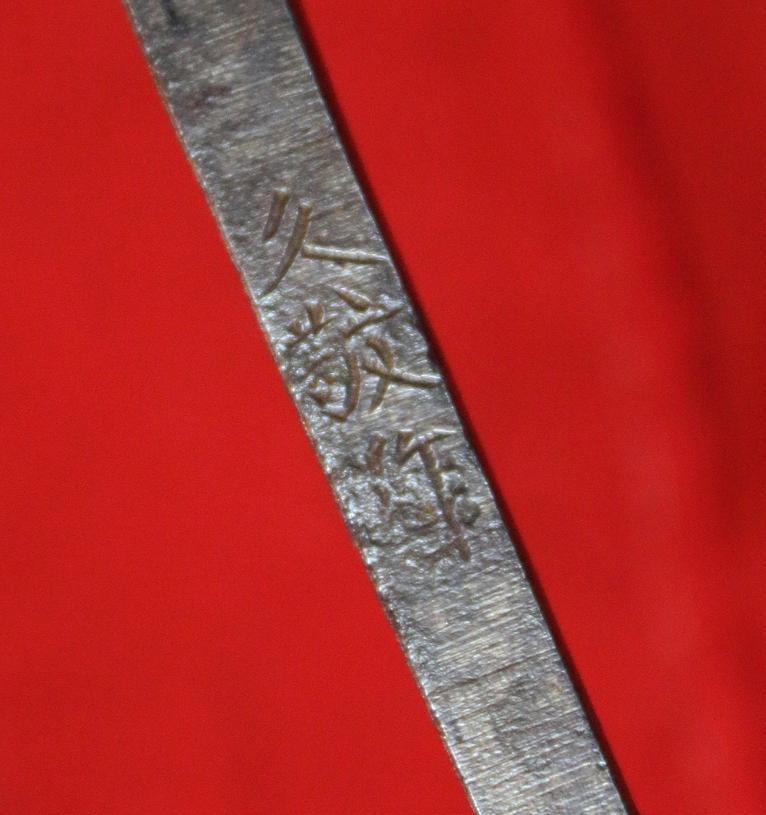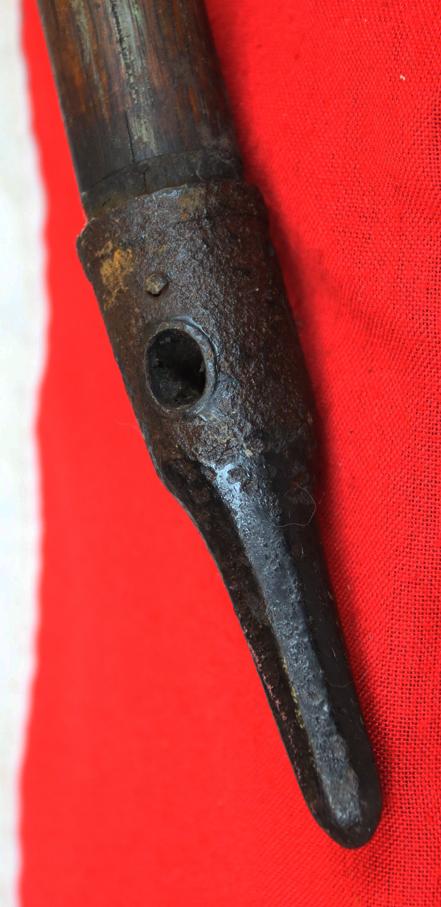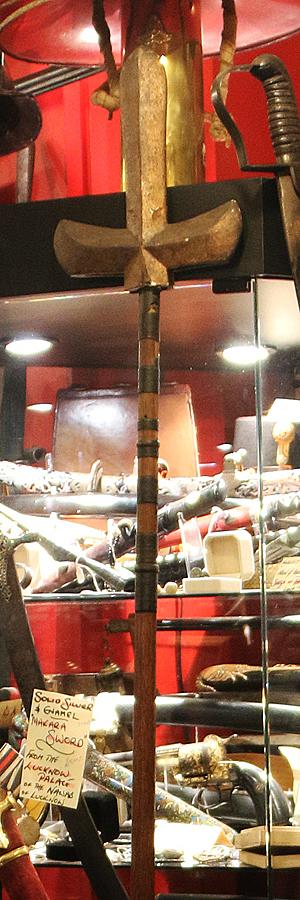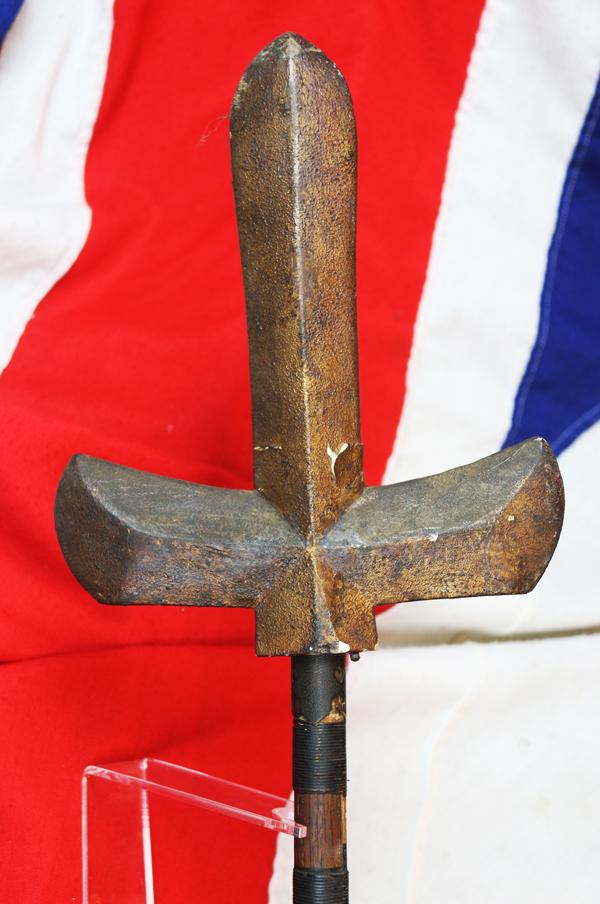A Very Good Shinto Period, Circa Later 1600's, Samurai Spear, A Ryo-Shinogi Yari Pole Arm. Signed Hisatoshi, & Magari-Yari Saya
The magari-yari saya would indicate it would be used on a triple bladed magari-yari pole arm.
An Edo Period Samurai Horseman Ryo-Shinogi Yari Polearm on original haft, circa 1670. For use on or off horseback.
Beautiful bright polish with suguha straight hamon to both edges.
With original pole and iron foot mount ishizuki. Four sided double edged head. The mochi-yari, or "held spear", is a rather generic term for the shorter Japanese spear. It was especially useful to mounted Samurai. In mounted use, the spear was generally held with the right hand and the spear was pointed across the saddle to the soldiers left front corner.
The warrior's saddle was often specially designed with a hinged spear rest (yari-hasami) to help steady and control the spear's motion.
The mochi-yari could also easily be used on foot and is known to have been used in castle defense. The martial art of wielding the yari is called sojutsu. A yari on it's pole can range in length from one metre to upwards of six metres (3.3 to 20 feet). The longer hafted versions were called omi no yari while shorter ones were known as mochi yari or tae yari. The longest hafted versions were carried by foot troops (ashigaru), while samurai usually carried a shorter hafted yari.
Ryō-shinogi yari, a blade with a diamond shaped cross section
Honda Tadakatsu was famous as a master of one of The Three Great Spears of Japan, the Tonbokiri (蜻蛉切). One of The Three Great Spears of Japan, the Nihongō (ja:日本号) was treasured as a gift, and its ownership changed to Emperor Ogimachi, Shogun Ashikaga Yoshiaki, Oda Nobunaga, Toyotomi Hideyoshi, Fukushima Masanori, and so on, and has been handed down to the present day.
Yari are believed to have been derived from Chinese spears, and while they were present in early Japan's history they did not become popular until the thirteenth century.The original warfare of the bushi was not a thing for "commoners"; it was a ritualized combat usually between two warriors who may challenge each other via horseback archery and sword duels. However, the attempted Mongol invasions of Japan in 1274 and 1281 changed Japanese weaponry and warfare. The Mongol-employed Chinese and Korean footmen wielded long pikes, fought in tight formation, and moved in large units to stave off cavalry. Polearms (including naginata and yari) were of much greater military use than swords, due to their much greater range, their lesser weight per unit length (though overall a polearm would be fairly hefty), and their great piercing ability. Swords in a full battle situation were therefore relegated to emergency sidearm status from the Heian through the Muromachi periods.
The shaft (nagaye or ebu) came in many different lengths, widths, and shapes; made of hardwood and covered in lacquered bamboo strips, these came in oval, round, or polygonal cross section. These in turn were often wrapped in metal rings or wire (dogane), and affixed with a metal pommel (ishizuki; 石突) on the butt end. Yari shafts were often decorated with inlays of metal or semiprecious materials such as brass pins, lacquer, or flakes of pearl. A sheath (saya; 鞘) was also part of a complete yari.
The Three Great Spears of Japan are three individual spears (yari) that were made and crafted by the greatest historical blacksmiths of Japan:1
Tonbokiri (蜻蛉切): This spear once wielded by Honda Tadakatsu, one of the great generals of Tokugawa Ieyasu. It was forged by Masazane, a disciple of Muramasa. It is now owned by a private individual and lent to the Sano Art Museum for its collection. The type of blade shape is sasaho yari.2
Nihongo, or Nippongo (日本号): A famous spear that was once used in the Imperial Palace. Nihongo later found its way into the possession of Fukushima Masanori, and then Tahei Mori. It is now at Fukuoka City Museum. The type of blade shape is omi yari.2
Otegine (御手杵): It was a spear that Yuki Harutomo, a daimyo, ordered Shimada Gisuke, a swordsmith, to make. It was lost in the Bombing of Tokyo in 1945. The type of blade shape was omi yari.
this yari's blade is 17.5 inches including tang, blade 5 inches long, overall in pole 78 inches {not including saya}
Code: 24041
1695.00 GBP




